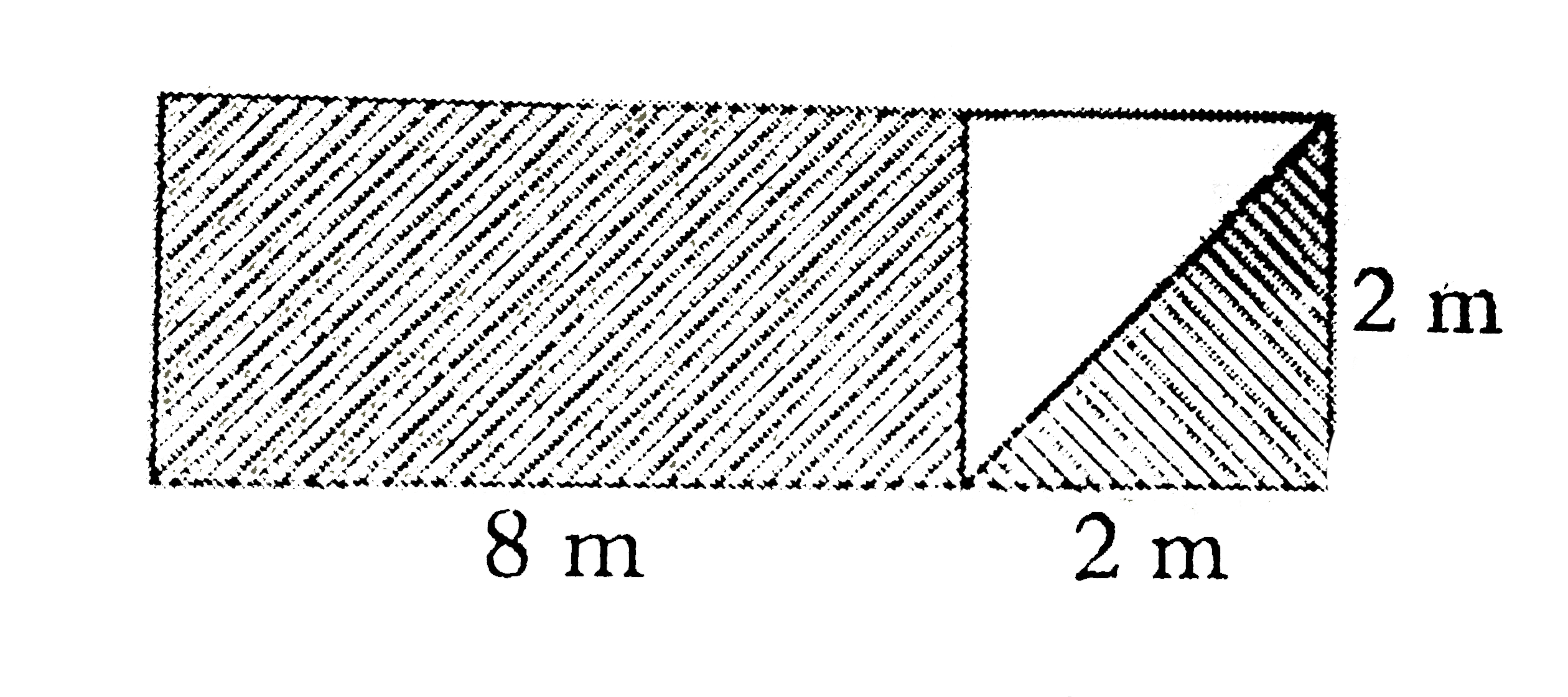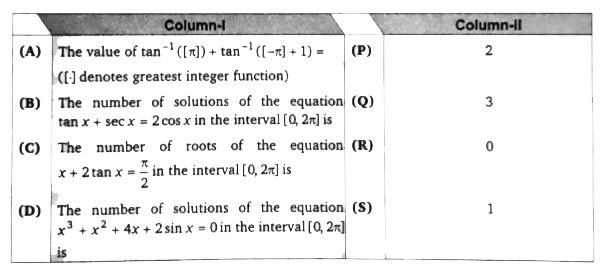The correct Answer is:A→R;B→P;C→Q;D→S
Topper's Solved these Questions
- INVERSE TRIGONOMETRIC FUNTIONS BOOK - VK JAISWALCHAPTER - INVERSE TRIGONOMETRIC FUNTIONS EXERCISE - Exercise-5 : Subjective Type Problems
6 Videos
- INVERSE TRIGONOMETRIC FUNTIONS BOOK - VK JAISWALCHAPTER - INVERSE TRIGONOMETRIC FUNTIONS EXERCISE - Exercise-3 : Comprehension Type Problems
2 Videos
- INDEFINITE AND DEFINITE INTEGRATIONBOOK - VK JAISWALCHAPTER - INDEFINITE AND DEFINITE INTEGRATIONEXERCISE - EXERCISE (SUBJECTIVE TYPE PROBLEMS)
29 Videos
- LIMITBOOK - VK JAISWALCHAPTER - LIMITEXERCISE - EXERCISE (SUBJECTIVE TYPE PROBLEMS)
7 Videos
Similar Questions
The complete set of values of x satisfying the inequality sin−1(sin5)>x2−4x is (2−√λ−2π,2+√λ−2π), then λ=
View SolutionLet cos−1(4x3−3x)=a+bcos−1x
Q. If x∈[−12,12], then sin−1(sinab) is :
View Solution∫x+(cos−13x)2√1−9x2dx=1k1(√1−9x2+(cos−13x)k2)+c, then k21+k22= (where C is an arbitrary constnat. )
View SolutionIf limx→0lncot(π4−βx)tanax=1, thetn αβ=.....
View SolutionIdentify the cell organelle 'A' :-
ltimg src="https://d10lpgp6xz60nq.cloudfront.net/physics_images/ALN_BIO_C10_E08_018_Q01.png" width="80%"gt
View SolutionHow many lines of symmetry does the above figure have ?
View SolutionWhich of the following are correct chain isomers of butane ? (i)
View SolutionDetermine the point of symmetry of a regular hexagon.
View SolutionDtermine the images of the following figure about the given line :
View SolutionMatch the following Column A to Column B

View SolutionMatch the following Column A to Column B

View SolutionMatch the following Column A to Column B

View SolutionFind the area of the figure given below.

View SolutionThe area of the shaded part in the figure given below is ______.

View SolutionThe inequation represented by the graph given below is :
View SolutionThe inequation that best describes the graph given below is _________
View Solution

